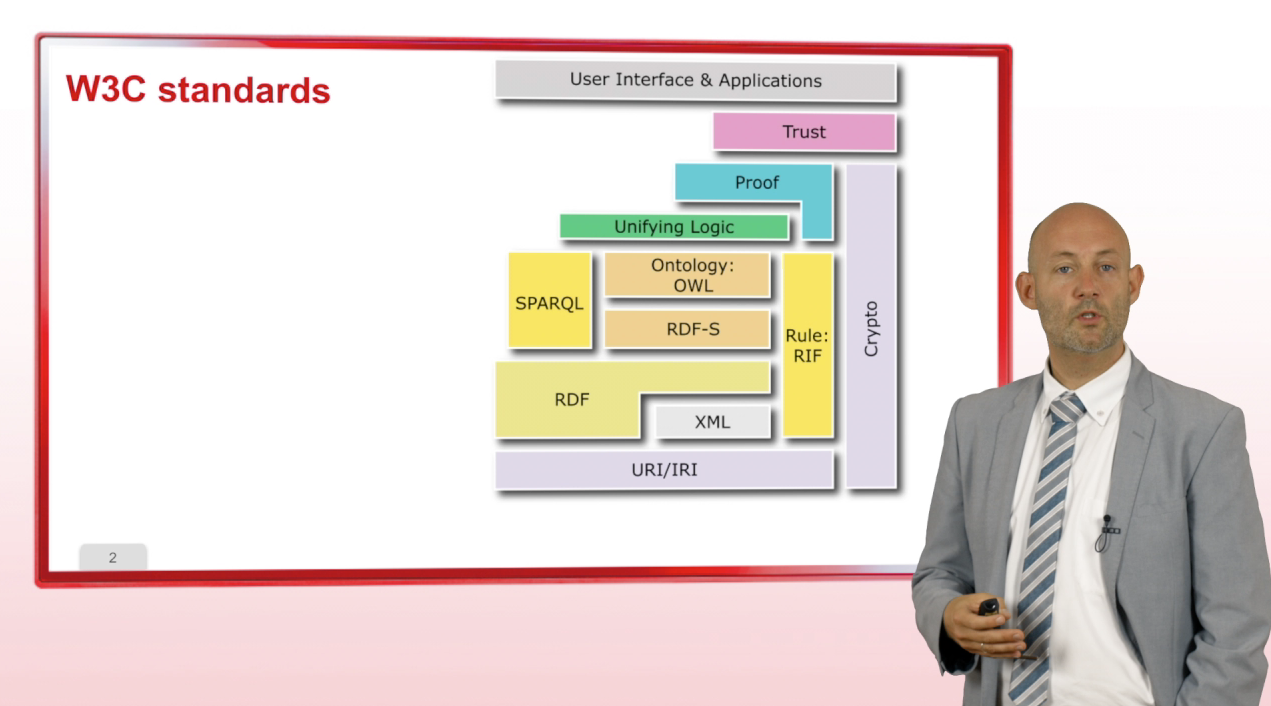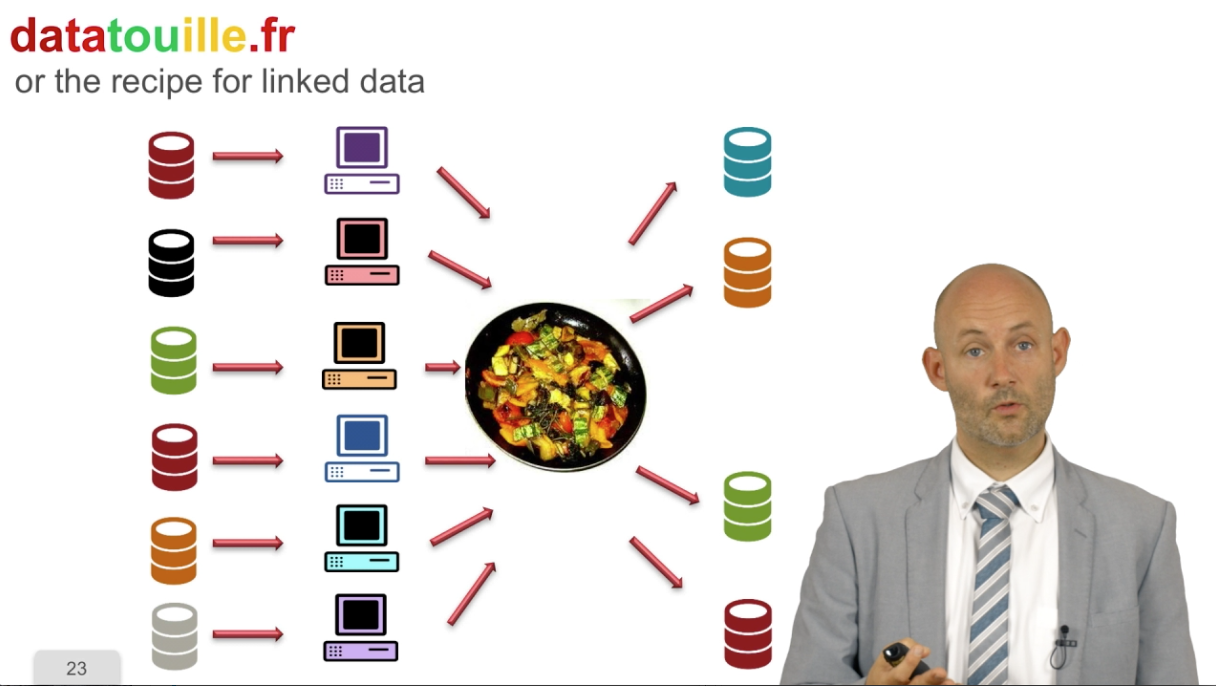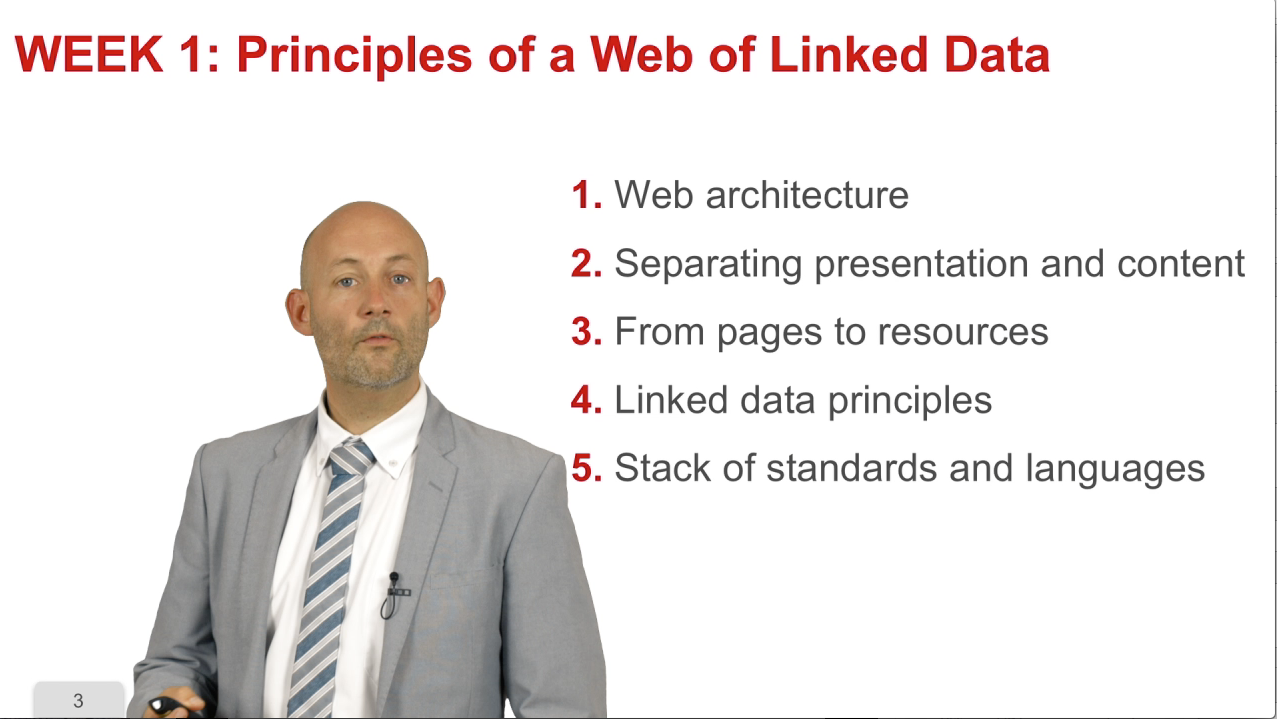1. Principles of a Web of Linked Data

Descriptif
welcome to this introduction to a Web of Linked Data. This first part is dedicated to principles of the Web of Linked Data.
It will be broken down into five parts. The first part is about the Web architecture and its core notions. The second part is one of the first evolutions of the Web, separating the presentation and the content. The third part is an evolution, going from We b pages to Web resources. Then we will see the core principles that are behind the Linked Data, and we will finish with an overview of the stack of standards and languages used to publish data on the Web. Let us start with the Web architecture.
Table of Contents :
1. Historical Introduction to the Web Architecture
2. Separating Presentation and Content
3. From Pages to Resources
4. Linked Data Principles
5. Stack of Standards and Languages
Demos on a web of Linked Data
Vidéos
Demos about a Web of Linked data
The BBC Web site uses linked (open) data The Wildlife documentary catalog on the Web site of BBC The Web site of BBC is structured and augmented with both internal and public linked data. In
5. Stack of Standards and Languages
Let us now conclude this first part with an overview of the stack of standards and languages that are used to publish data on the
4. Linked Data Principles
In this fourth part, we're going to see the principles behind Linked Data. What we're going to do is to change slightly how we
3. From pages to resources
In this third part, we will see another evolution of the Web, or more precisely, an evolution of the way we use the Web. We will
2. Separating Presentation and Content
We now consider one of the first evolutions of the web, to separate the presentation and the content. In 1996, CSS, standing for
1. Historical Introduction to the Web Architecture
Going back in history, back in 1945, Vannevar Bush wrote an article entitled "As we may think". In this article, he
Intervenants et intervenantes
Auteur d'une thèse en Informatique à Nice en 1988
Professeure en poste à Université Côte d'Azur (en 2022)
Maîtresse de conférences en poste à l'Université de Nice-Sophia Antipolis (en 2020)
Autrice d'une thèse en sciences appliquées soutenue à Paris 6 en 1997
Professeur des Universités Université de Côte d'Azur
Rapporteure lors d'une thèse soutenue à l'INSA Lyon en 2024
Présidente du jury d'une thèse en Informatique à Université Côte d'Azur en 2024
Chercheur à l'INRIA de Sophia-Antipolis, FR (en 2016). Directeur de recherche à l'INRIA Sophia Antipolis-Méditerranée, Université Côte d'Azur (en 2021)
Titulaire d'un doctorat en sciences (Informatique, Nice, 2002)









